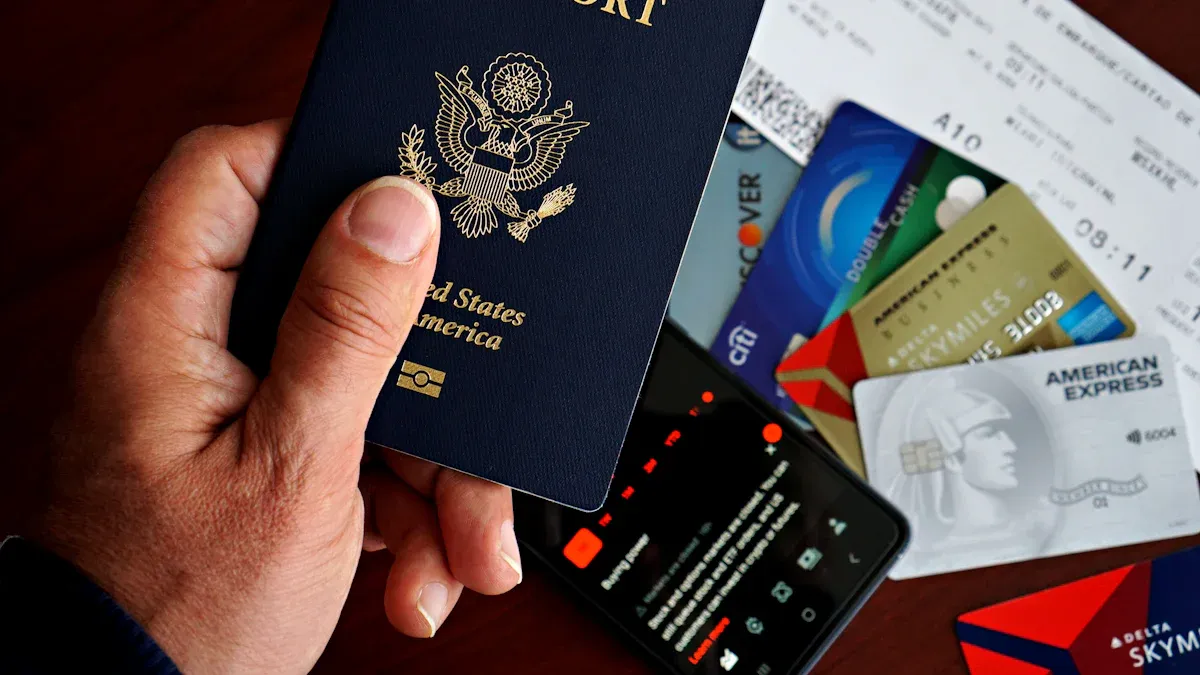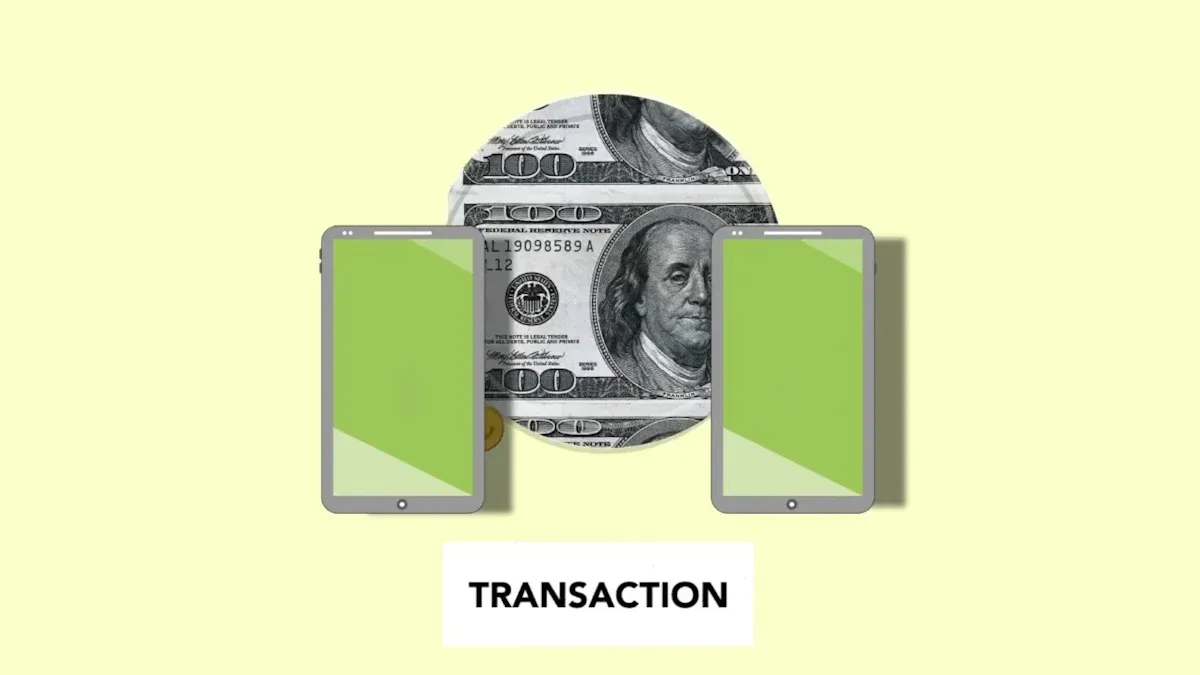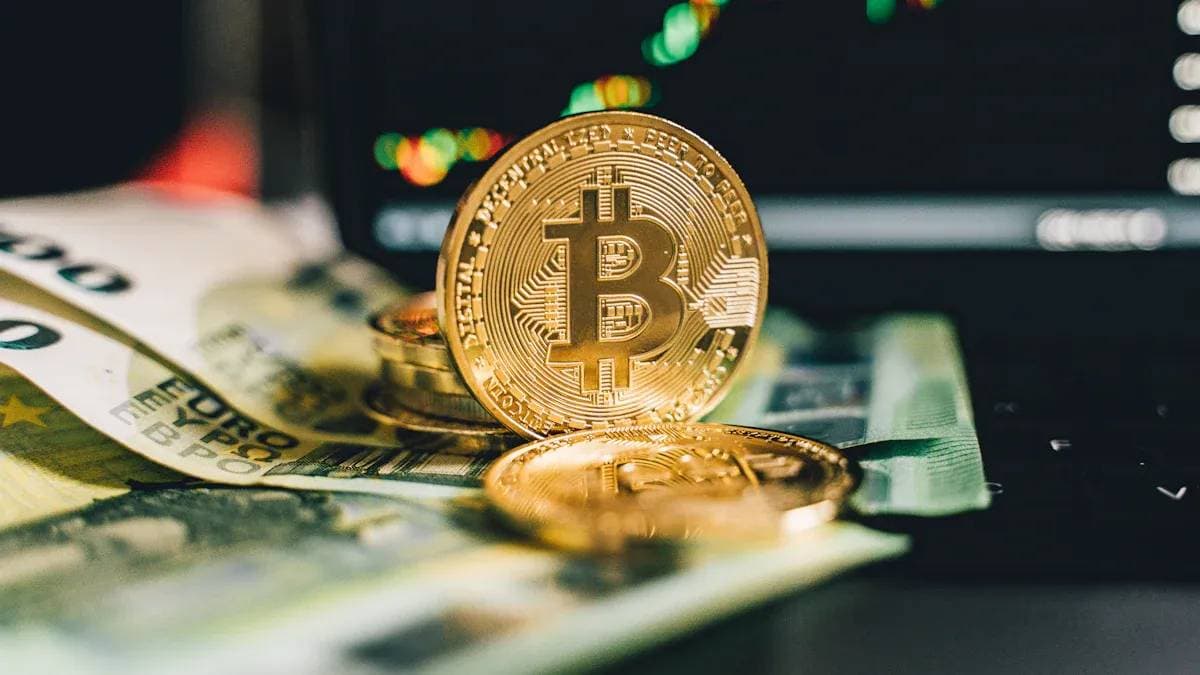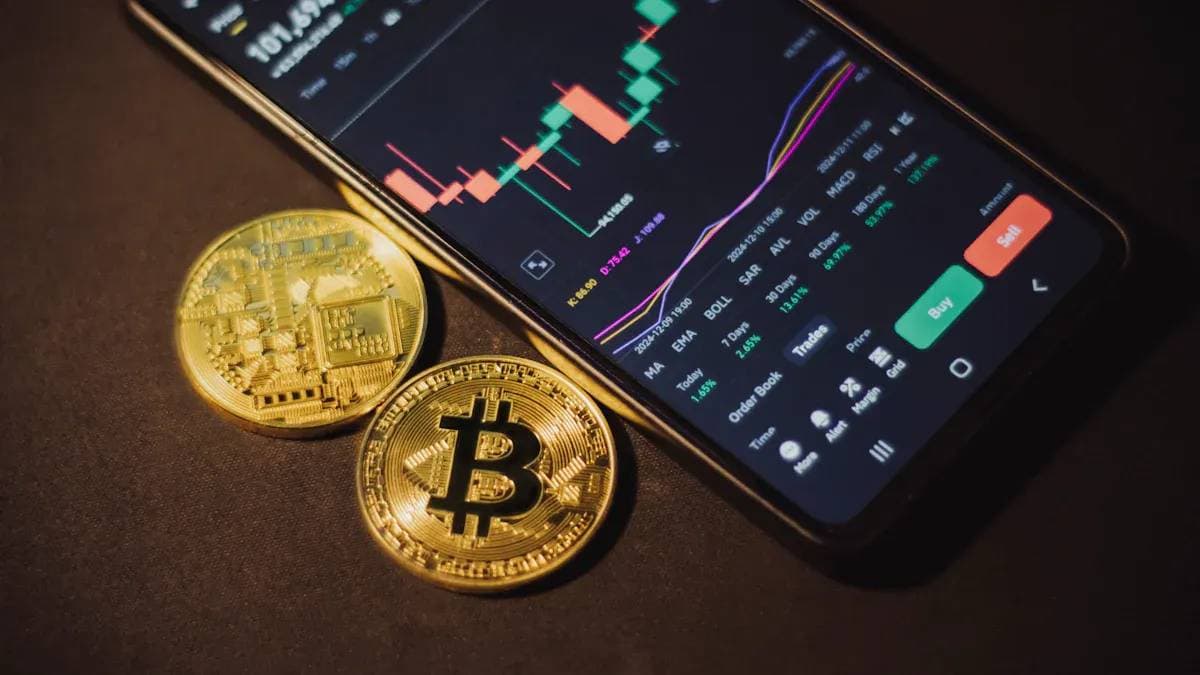- EasyCard
- Trade
- Help
- Announcement
- Academy
- SWIFT Code
- Iban Number
- Referral
- Customer Service
- Blog
- Creator
How to Secure and Comply with Stablecoin International Remittances?

Image Source: pexels
When conducting stablecoin international remittances, how do you find the balance between efficiency and risk? The key lies in choosing fully regulated stablecoins and trustworthy compliant platforms. This choice not only directly relates to fund security but also brings a remittance experience far superior to traditional banks.
The global average cost of traditional bank wire transfers is about 6.2%, with lengthy settlement times. In contrast, stablecoins reduce transaction costs to below 1.5% and achieve near-instant fund transfers.
By following the correct path, businesses and individuals can fully leverage the advantages of this innovative financial tool.
Key Takeaways
- Choosing regulated stablecoins and compliant platforms can ensure fund security and make international remittances faster and cheaper.
- USDC is a highly compliant stablecoin with transparent reserves and strict regulation. USDT has a large market share, but its reserve transparency is not as good as USDC.
- Using compliant remittance platforms is important. These platforms have licenses, conduct identity verification and anti-money laundering checks, protecting users’ fund security.
- Understanding the policies of the remittance destination is important. Some countries have strict restrictions on cryptocurrencies, which increase remittance risks and costs.
- Protecting personal fund security requires properly storing wallet seed phrases, using hardware wallets, and being vigilant against online scams.
Stablecoin International Remittances: Advantages and Application Scenarios

Image Source: pexels
Why Choose Stablecoin Remittances
Businesses and individuals choose stablecoins for international remittances mainly for their superior efficiency and cost advantages. Stablecoins combine the reliability of traditional currencies with blockchain technology, providing a practical payment solution. Traditional banking systems rely on multiple intermediaries, leading to delays and high fees. Stablecoin payments are processed directly on the blockchain, achieving near-instant settlement and operating year-round without rest.
Once a stablecoin transaction is confirmed on the blockchain, it is irreversible. This finality of transactions significantly reduces counterparty risk, providing stronger security for commercial activities.
This model is not only fast and low-cost but also globally accessible, especially suitable for handling complex cross-border transactions.
B2B Payments and Trade Finance Applications
In the business-to-business (B2B) field, stablecoin applications are moving from theory to practice, becoming powerful tools for optimizing cash flow and financial management. Many companies use stablecoins to replace slow correspondent banking networks, shortening settlement times from days to minutes.
Enterprise applications of stablecoins are increasingly diversified:
- Global Supplier Payments: Payment giants like PayPal and Mastercard are integrating stablecoins into their networks. They help US companies pay overseas suppliers with stablecoins like USDC, automatically handling compliance and forex conversion, ultimately settling in local fiat currency with faster processes and lower costs.
- Internal Corporate Fund Management: Large multinational companies like Siemens are using JPMorgan’s JPM Coin to automate fund transfers between global accounts. This improves cash visibility and liquidity utilization efficiency within the group.
- Payments in Emerging Markets: For companies operating in regions with underdeveloped financial systems (such as SpaceX), accepting stablecoin payments can effectively hedge local currency fluctuation risks and simplify receipt processes.
Personal Remittances and Remote Salary Payments
The advantages of stablecoins also benefit individual users, especially in personal remittances and remote salary payments. For users remitting to overseas family, stablecoin international remittances provide a near-instant and extremely low-cost alternative, bypassing the layered fees of traditional remittance institutions.
In emerging markets like Latin America, Africa, and Southeast Asia, high smartphone penetration and limited banking services make stablecoins an ideal financial tool. At the same time, the trend of globalized work is driving stablecoin applications in salary payments. Companies can instantly pay salaries to remote employees worldwide via stablecoins, without worrying about bank delays or high currency conversion losses, ensuring employees receive full compensation on time.
Compliant Stablecoins: How to Choose and Identify
Choosing the right stablecoin is the first step in secure remittances. Not all stablecoins are created equal. A stablecoin’s value proposition lies not only in its price stability but also in its compliance framework and issuer credibility. Users must learn to identify stablecoins that are strictly regulated with transparent reserves to avoid potential risks.
Identifying Regulated Stablecoins
A regulated stablecoin means its issuer has obtained financial licenses in specific jurisdictions and commits to complying with a series of strict operational standards. These standards aim to protect consumers, maintain financial stability, and combat illegal activities.
Regulators’ goal is to ensure stablecoin issuers have sufficient capital and liquidity to fulfill their 1:1 redemption commitments at any time, while preventing their systems from being used for money laundering or terrorist financing.
According to frameworks proposed by institutions like the US Treasury, a compliant stablecoin issuer typically needs to meet the following core requirements:
- Capital and Risk Management: Issuers must meet capital, liquidity, and risk management standards set by regulators to ensure stable operations.
- Anti-Money Laundering/Anti-Terrorist Financing (AML/CFT): Issuers must establish robust technologies and processes to identify and report suspicious transactions, complying with laws like the Bank Secrecy Act.
- Issuer Qualifications: Regulators set conditions for non-financial companies issuing stablecoins to prevent excessive concentration of economic power.
- Regulatory Equivalence: For foreign issuers serving US residents, their local regulatory systems must be as strict as US domestic rules.
Specifically, compliant stablecoin reserves must meet the following strict standards:
| Category | Specific Requirements |
|---|---|
| Full Reserve Backing (1:1) | Stablecoins must be fully backed 1:1 by high-quality, highly liquid reserve assets. |
| Allowed Reserve Assets | Limited to cash, bank demand deposits, short-term US Treasury bills, and other regulator-approved high-liquidity assets. |
| Reserve Segregation | Reserve assets must be segregated from the issuer’s operational funds and prohibited from rehypothecation or speculation. |
| Redemption Rights and Disclosure | Users must have clear on-demand redemption rights, and issuers must clearly disclose redemption policies and fees. |
Issuer Qualifications and Market Trends
As global regulatory frameworks become clearer, the stablecoin market is undergoing a “compliance race.” Issuers need to invest heavily in obtaining licenses, undergoing audits, and meeting capital requirements. This leads to market resources concentrating in large, transparent companies with ample capital, while smaller or opaque issuers face elimination risks.
Multiple countries and regions worldwide are paving the way for compliant stablecoin issuance.
For example, the Monetary Authority of Singapore (MAS) has issued Major Payment Institution licenses to companies like Paxos and StraitsX, allowing them to issue compliant stablecoins. Meanwhile, local governments like Wyoming are actively exploring issuing state-backed stablecoins (WYST) fully backed by US Treasuries. These initiatives mark stablecoins transitioning from fringe tools in the crypto world to officially recognized financial infrastructure.
Market share also reflects this trend. USDT and USDC, the two giants, together hold over 90% of the market, showing users’ high emphasis on credibility and compliance.
Regulatory Path Comparison of Mainstream Stablecoins
In the stablecoin market, Circle-issued USDC and Tether-issued USDT are the two most representative cases, but they have taken entirely different strategies in embracing regulation.
USDC: A Model of Proactive Compliance
Circle has placed compliance at the core of its strategy from the beginning. It actively seeks cooperation with regulators and holds licenses in major financial centers worldwide (such as the US, Singapore, and France). USDC strictly complies with regulations from institutions like the New York State Department of Financial Services (NYDFS), with the following operational characteristics:
- Fully Transparent Reserves: Circle publishes monthly reserve attestation reports by top accounting firms (such as Deloitte), detailing cash and short-term US Treasuries backing USDC.
- Strict Asset Composition: Reserves are limited to cash and short-term US government bonds, excluding higher-risk assets.
- Robust Compliance System: As a regulated financial institution, Circle implements strict KYC (Know Your Customer) and AML (Anti-Money Laundering) processes and cooperates with law enforcement to freeze addresses related to illegal activities.
USDT: From Opacity to Gradual Compliance
In contrast, Tether’s compliance journey has been more tortuous. USDT was early criticized for insufficient reserve transparency. However, facing growing regulatory pressure and market competition, Tether has taken measures in recent years to improve transparency and compliance.
- Regular Attestations: Tether now publishes quarterly reserve composition reports, though their detail and audit level still lag behind USDC.
- Diversified Reserve Assets: Reserves include cash and Treasuries but may also contain other asset types, bringing higher yields but sparking discussions on risks.
- Passive Regulatory Cooperation: Tether cooperates with law enforcement to freeze addresses but overall adopts a more passive adjustment posture under regulatory requirements rather than proactively leading.
| Feature | USDC (Circle) | USDT (Tether) |
|---|---|---|
| Regulatory Strategy | Proactively embraces regulation, licensed in multiple global locations | Historically more passive, gradually adapting to regulatory requirements |
| Reserve Transparency | High, monthly detailed audit reports | Medium, quarterly attestation reports |
| Reserve Assets | Limited to cash and short-term US Treasuries | More diversified, including other asset categories |
| Compliance System | Strictly enforces KYC/AML, close cooperation with regulators | Cooperates with enforcement, but compliance framework less clear than USDC |
In summary, choosing USDC means selecting a highly transparent and strictly regulated financial tool, more suitable for businesses and individuals with strict compliance requirements. Although USDT has the largest market share and liquidity, users need a clearer understanding of its history and reserve composition. For stablecoin international remittances pursuing ultimate security and compliance, the issuer’s regulatory path is the most important consideration in decision-making.
Compliant Remittance Channels: Platform Selection and Processes
After choosing a compliant stablecoin, the next step is to find a secure and reliable remittance channel. A compliant platform is the bridge connecting users to the stablecoin world, directly determining the security and legality of fund flows. For stablecoin international remittances, selecting the right platform and understanding its core processes are crucial.
Screening Licensed Exchanges and Fintech Platforms
Users should not choose platforms based solely on rates or convenience but prioritize the platform’s compliance qualifications. Licensed operations mean the platform is supervised by financial regulators and must comply with strict capital, risk control, and anti-money laundering regulations.
A platform’s license is the best proof of its compliance. It indicates the platform has passed rigorous regulatory scrutiny and commits to operating under a transparent legal framework, providing basic protection for user funds.
Globally, major financial centers have clear licensing requirements for platforms offering stablecoin services. Users can refer to the following standards when choosing:
- US Market:
- Federal Level: Platforms must register with the Financial Crimes Enforcement Network (FinCEN) as a Money Services Business (MSB), the foundation for AML compliance.
- State Level: Platforms usually need to obtain Money Transmitter Licenses (MTL) in each state they operate, with varying requirements per state.
- Specific Businesses: If involving digital assets classified as securities or commodities, compliance with the US Securities and Exchange Commission (SEC) or Commodity Futures Trading Commission (CFTC) is required.
- European Market:
- VASP License: Platforms need Virtual Asset Service Provider (VASP) licenses to meet anti-money laundering (AML) and counter-terrorist financing (CTF) requirements.
- MiCA Regulation: With the full implementation of the Markets in Crypto-Assets Regulation (MiCA), all platforms serving the EU must obtain MiCA-compliant authorization to enhance consumer protection.
Fintech platforms like Biyapay, by holding key licenses such as US MSB, demonstrate their commitment to compliant operations in mainstream markets. Choosing such licensed institutions allows users to effectively reduce risks like platform absconding or fund freezing.
KYC and AML: Core Processes for Transaction Security
Know Your Customer (KYC) and Anti-Money Laundering (AML) are core processes that compliant platforms must execute. These procedures are not unnecessary hassles but key defenses protecting all users’ fund security and preventing platform misuse for illegal activities.
The KYC process requires users to provide identity documents like passports or ID cards during registration and may involve facial recognition verification. Platforms confirm users’ true identities through this. AML processes continuously monitor transaction behaviors via technology, identifying and reporting suspicious activities like money laundering or terrorist financing.
Compliant platforms executing strict KYC and AML processes are like banks requiring identity verification to open accounts. It is not only a regulatory requirement but also the platform’s responsibility to protect itself and users from financial crimes.
For example, when using compliant platforms like Biyapay for remittances, completing identity verification is a prerequisite for enabling full functions. Platforms execute varying verification levels based on risk factors like transaction amount, frequency, and destination. This process ensures every fund flow is traceable, providing strong support for tracing and resolving issues in case of disputes or illegal activities.
Integration Solutions with Traditional Financial Institutions
The compliance path for stablecoins is reflected not only in crypto-native platforms but also in deep integration with traditional financial giants. Payment giants like Visa and Stripe are actively integrating compliant stablecoins like USDC into their global payment networks, providing users with safer and more convenient options.
The ingenuity of this integration lies in its near “seamless” experience for merchants and consumers:
- Stripe’s Stablecoin Payments: Stripe allows enterprise clients to use USDC for cross-border payments and salary disbursements. Its subsidiary Bridge, in partnership with Visa, launched bank cards supporting stablecoin payments.
- Visa’s Seamless Experience: Consumers can use this card at any merchant worldwide accepting Visa. The backend system automatically converts USDC in consumer accounts to local fiat for merchant settlement. Merchants need no system modifications, and the consumer experience is identical to regular card swiping.
Beyond payment companies, traditional banks are actively exploring stablecoin integration.
| Bank/Institution | Stablecoin Issuer/Project | Cooperation Content/Purpose |
|---|---|---|
| BNY Mellon | Circle (USDC Issuer) | Serves as one of USDC’s primary custodians and simplifies client fund entry/exit channels, achieving seamless docking between traditional banking systems and the stablecoin ecosystem. |
| Japan’s Three Major Banks | Project Pax | Participate in pilot platforms to test stablecoin cross-border payments, exploring blockchain integration with existing SWIFT systems. |
| A Licensed Bank in Hong Kong | Animoca Brands, HKT | Participate in joint venture to apply for licenses from the Hong Kong Monetary Authority, planning to issue HKD-backed compliant stablecoins. |
These cases show stablecoins evolving from independent crypto tools into important components embedded in global financial infrastructure. Through these integration solutions, users can enjoy stablecoins’ high efficiency and low costs while obtaining traditional finance-level security and convenience.
Global Regulatory Framework: Complying with Key Jurisdiction Regulations

Image Source: pexels
Conducting stablecoin cross-border remittances requires not only choosing compliant stablecoins and platforms but also understanding and complying with regulatory frameworks in major global jurisdictions. Differences in national policies directly affect transaction legality and security; ignoring regulatory dynamics may lead to fund freezing or legal risks.
Major Economy Regulatory Dynamics: EU MiCA, Hong Kong, and Singapore
Global major financial centers are actively formulating clear rules for stablecoins, with the EU’s Markets in Crypto-Assets Regulation (MiCA) being the most representative. MiCA provides a unified legal framework for stablecoin issuers and trading platforms, aiming to protect consumers and maintain financial stability.
Core requirements of MiCA regulation include:
- Issuer Responsibilities: Stablecoin issuers must maintain 1:1 liquid reserves and ensure reserve assets are invested in low-risk areas. Holders have the right to redeem at face value anytime.
- Platform Authorization: Crypto-Asset Service Providers (CASPs) must obtain authorization to operate in the EU and bear liability for user asset losses caused by their own faults.
Meanwhile, Hong Kong and Singapore are actively building their own regulatory systems. The Hong Kong Monetary Authority plans to launch a stablecoin issuance “sandbox,” while the Monetary Authority of Singapore has issued licenses to some institutions allowing compliant stablecoin issuance. These initiatives indicate clear regulation is the necessary path for stablecoins to integrate into mainstream finance.
Policy Risks in Remittance Destination Countries
Users must pay special attention to policy risks in remittance destination countries, especially those with strict capital controls. In these regions, governments may restrict cryptocurrency transactions to prevent capital outflows, causing stablecoins to trade at high premiums.
| Country | Restriction Type | Impact/Result |
|---|---|---|
| Nigeria | Direct Restrictions | Authorities block trading sites and freeze related bank accounts. |
| Argentina | Structural Restrictions | Long-term existence of multiple parallel USD exchange rate markets. |
These policies not only increase remittance costs but may push users toward unregulated, higher-risk informal channels. Therefore, the legal environment of the destination country must be assessed before remitting.
Mainland China’s Regulatory Stance and Outlook
Mainland China takes a strict prohibition stance on privately issued stablecoins. People’s Bank of China Governor Pan Gongsheng has clearly stated that private stablecoins may undermine financial stability and evade capital controls. Officials believe tokens like USDT and USDC may be used for unmonitored cross-border fund transfers, posing threats to monetary sovereignty.
Therefore, mainland China continues to prohibit cryptocurrency transactions and strengthen supervision of related activities. The core of official strategy is promoting the state-backed digital RMB (e-CNY) to ensure government control over digital transactions. Nevertheless, discussions suggest China may explore issuing offshore RMB-backed stablecoins in the future to counter USD dominance in international payments.
Technical Security Assurances: Protecting Your Funds
Beyond choosing compliant stablecoins and platforms, technical-level security assurances are the last line of defense for fund protection. Every link from issuer risk control systems to users’ own security habits is crucial.
Smart Contract Audits and On-Chain Risk Control
Compliant stablecoin security starts with underlying smart contracts. Issuers hire top security firms to conduct rigorous audits of smart contracts to discover and fix potential vulnerabilities, preventing hacker attacks. But this is just the first step; continuous on-chain risk monitoring is equally critical.
Leading stablecoin issuers deploy powerful on-chain risk control systems; this is not only a regulatory requirement but a necessary tool to protect the entire ecosystem and user assets.
These risk control measures typically include:
- Real-Time Transaction Monitoring: Using blockchain analysis tools to continuously monitor fund flows and identify suspicious transaction patterns.
- Wallet Address Screening: Establishing and maintaining address blacklists (deny lists) to automatically block transactions with addresses linked to illegal activities (such as money laundering, terrorist financing).
- Automated Alerts: Setting configurable alert systems; risk control teams receive immediate notifications when transactions trigger high-risk rules.
- Cross-Chain Tracking Capabilities: Ability to investigate fund flows across multiple blockchains to address increasingly complex financial crimes.
Cross-Chain Technology and Multi-Chain Trends
To improve efficiency and application scope, mainstream stablecoins (like USDC) are natively issued on multiple blockchains such as Ethereum, Solana, and Avalanche. This multi-chain trend creates demand for secure cross-chain technologies. Traditional cross-chain bridges operate via “lock-mint” mechanisms, posing security risks and liquidity fragmentation.
Circle’s launched Cross-Chain Transfer Protocol (CCTP) provides a safer solution. It uses a native “burn-mint” mechanism where users burn USDC on the source chain, and Circle verifies before minting equivalent USDC on the target chain. This method does not rely on third-party bridges, with asset security directly guaranteed by the issuer.
| Transfer Method | Core Mechanism | Security Assurance | Speed |
|---|---|---|---|
| Standard Transfer | Relies on source chain’s “hard finality” (irreversible transactions), Circle verifies then mints on target chain. | Extremely high security, fully dependent on blockchain consensus. | Slower, depends on source chain finality time. |
| Fast Transfer | After “soft finality,” guaranteed by Circle’s fund pool, immediately mints on target chain. | Additional guarantee from Circle’s credibility and capital. | Extremely fast, usually completes in seconds. |
Core Security Principles for Personal Wallets
No matter how secure the platform and stablecoin are, users’ own security habits are indispensable. For users of self-custody wallets (like MetaMask, Ledger), following these core principles is crucial:
- Properly Backup Seed Phrases: Write seed phrases on paper, make multiple physical backups, and store in fireproof, waterproof secure locations. Never store digitally (such as screenshots or text files).
- Use Hardware Wallets: Combine software wallets like MetaMask with hardware wallets like Ledger. Hardware wallets store private keys offline in independent secure chips, greatly enhancing asset security.
- Beware of Phishing Attacks: Do not click unknown links or authorize unknown smart contracts. Before any transaction, carefully verify transaction details on the hardware wallet.
- Keep Software Updated: Promptly update wallet software and operating systems to fix known security vulnerabilities.
By developing good security habits, users can build a solid personal defense line for their digital assets.
Future Outlook: Prospects of the Compliance Path
The future of stablecoin international remittances will be shaped by regulation, competition, and technology. A clearer, more efficient global payment network is forming, but the road ahead remains variable.
Global Regulatory Convergence and Compliance Costs
Global financial regulators are accelerating unified rules for stablecoins, with the EU’s Markets in Crypto-Assets Regulation (MiCA) as a milestone. This regulatory convergence brings certainty to the market but significantly increases operational costs. Compliance is no longer optional but essential for survival.
Industry predictions show compliance investments will continue rising:
- Large stablecoin issuers are expected to spend over 10 million euros in 2025 to fully comply with MiCA’s strict provisions.
- Up to 84% of issuers believe their compliance costs will rise in the next year.
Roles of Bank Stablecoins and CBDCs
Future competition comes not only from crypto-native companies but also from traditional financial giants and central banks. Commercial banks are actively exploring issuing their own stablecoins, while central banks advance central bank digital currency (CBDC) development.
Bank-issued stablecoins mainly have two models, differing significantly in structure and regulation from existing stablecoins.
| Feature | Bank-Issued Tokenized Deposits | Existing Stablecoins (e.g., USDC) |
|---|---|---|
| Issuer | Banks | Overseas fintech companies |
| Asset Backing | Existing bank deposits | Short-term government bonds etc. |
| Regulation | Follows banking regulatory framework | Subject to investor protection regulations |
| Distribution Scope | Usually limited to bank account holders | Distributable to unspecified parties |
Meanwhile, the emergence of digital USD or digital euro CBDCs may reshape the payment landscape. They, alongside private stablecoins, provide users with faster, cheaper cross-border payment options, directly challenging traditional remittance services. However, countries’ attitudes vary; US policy leans toward supporting privately issued USD stablecoins, while Europe sees the digital euro as key to financial stability.
Technology Innovation-Driven Future Payments
Technology innovation is the core engine driving stablecoin development, especially in solving privacy and efficiency issues. Cutting-edge technologies like zero-knowledge proofs (ZKP) enable confidential transactions on public blockchains.
Zero-knowledge proof technology allows users to verify transaction validity without revealing specific information, achieving perfect balance between transparency and business confidentiality.
Additionally, other technologies are pushing stablecoins toward maturity:
- Trusted Execution Environments (TEEs): Protect private keys and transaction data by creating secure zones within processors.
- Directed Acyclic Graphs (DAGs): As blockchain alternatives, provide faster transaction speeds and lower fees.
These technology innovations will collectively build a safer, more efficient, and privacy-respecting future payment network.
Achieving secure stablecoin international remittances relies on collaboration among users, platforms, and regulators. Individuals and businesses must choose compliant tools, understand regulations, and strengthen technical protections. Market trends clearly show compliance is the mainstream direction; opaque or high-risk projects are being eliminated.
- BUSD sharply reduced market share due to regulatory pressure.
- Algorithmic and opaque stablecoins lack growth.
- The Pax Dollar (USDP) example also shows compliance alone is insufficient for market share; competition remains fierce.
Proactively embracing regulation helps users leverage stablecoins as powerful financial tools, gaining advantages in the global payment landscape.
FAQ
Are Stablecoin Remittances Really Safe?
The security of stablecoin remittances depends on user choices. Choosing regulated stablecoins (like USDC) and licensed compliant platforms effectively ensures fund security. At the same time, users must follow personal wallet security principles to prevent technical risks.
Should I Choose USDC or USDT for Remittances?
For businesses and individuals pursuing ultimate security and compliance, USDC is the first choice. Its reserves are fully transparent and strictly regulated. USDT has the widest liquidity, but users need to assess potential risks in its reserve composition themselves.
What Are the Potential Costs of Stablecoin Remittances?
Stablecoin remittance costs mainly include three parts:
- Platform Service Fees: Fees charged by platforms for fiat entry/exit or transactions.
- Network Fees (Gas Fees): Fees paid to miners or validators for blockchain transfers.
- Fiat Conversion Spreads: Exchange rate losses when converting stablecoins to local fiat.
Is Using Stablecoins for Remittances Legal in Mainland China?
It is not legal. Mainland China regulatory authorities prohibit cryptocurrency-related transaction activities. Any use of stablecoins for cross-border fund transfers violates relevant financial regulations and faces extremely high legal risks. Users must strictly comply with local laws.
*This article is provided for general information purposes and does not constitute legal, tax or other professional advice from BiyaPay or its subsidiaries and its affiliates, and it is not intended as a substitute for obtaining advice from a financial advisor or any other professional.
We make no representations, warranties or warranties, express or implied, as to the accuracy, completeness or timeliness of the contents of this publication.




Contact Us
Company and Team
BiyaPay Products
Customer Services
BIYA GLOBAL LLC is a licensed entity registered with the U.S. Securities and Exchange Commission (SEC No.: 802-127417); a certified member of the Financial Industry Regulatory Authority (FINRA) (Central Registration Depository CRD No.: 325027); regulated by the Financial Industry Regulatory Authority (FINRA) and the U.S. Securities and Exchange Commission (SEC).
BIYA GLOBAL LLC is registered with the Financial Crimes Enforcement Network (FinCEN), an agency under the U.S. Department of the Treasury, as a Money Services Business (MSB), with registration number 31000218637349, and regulated by the Financial Crimes Enforcement Network (FinCEN).
BIYA GLOBAL LIMITED is a registered Financial Service Provider (FSP) in New Zealand, with registration number FSP1007221, and is also a registered member of the Financial Services Complaints Limited (FSCL), an independent dispute resolution scheme in New Zealand.




















